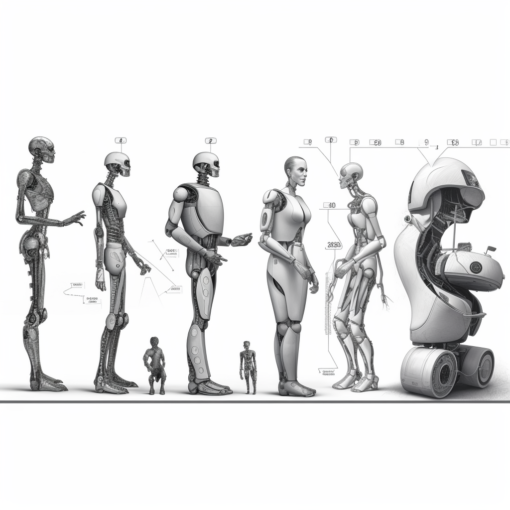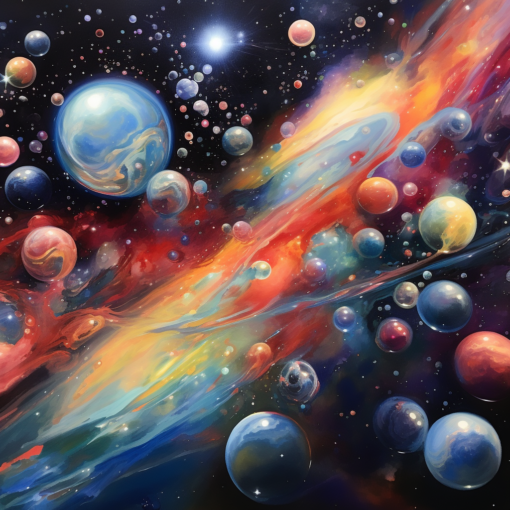Greetings, dear readers!
In today’s blog, we’ll dive headfirst into one of the most thrilling, perplexing, and enlightening domains of science: quantum physics. Specifically, we’ll explore the revolutionary Double-Slit Experiment—an experiment that I assure you, despite its seemingly simple setup, has upended our understanding of the physical world.
But first, a gentle warning. Quantum physics, as Werner Heisenberg, one of the founding fathers of this theory, once said, “is a realm where our everyday logic collapses”. So, buckle up for a fascinating, albeit strange, journey.
Our tale begins in the 19th century, when light was largely understood as a wave phenomenon. Then, a man named Thomas Young, in a simple but ingenious experiment involving light, two slits on a barrier, and a screen, presented us with an interesting quandary.
Young shone light—imagine it as a wave of crests and troughs—on a barrier with two slits. Logically, one might expect to see two light bands on the screen behind the barrier, corresponding to the two slits. But what appeared were several light and dark fringes, a clear pattern of interference, just as waves do when they intersect each other.
This experiment, while reinforcing the wave nature of light, soon clashed with another burgeoning concept—Einstein’s particle or ‘photon’ theory of light. How could light be both particle and wave? This enigma, the wave-particle duality, still remains one of the core conundrums of quantum mechanics.
The story takes an even stranger turn when you fire particles, like electrons, one at a time through the slits. Surely, they must behave as particles and form two bands, right? Astonishingly, they don’t. Even when fired one by one, they form an interference pattern, as if each electron goes through both slits simultaneously and interferes with itself.
But the final twist is still to come. If we place detectors at the slits to determine which slit the electron goes through, the interference pattern vanishes, and we are left with two bands. This bizarre phenomenon is now known as the observer effect—merely observing which path the electron takes alters its behavior!
The Double-Slit Experiment has become emblematic of the quantum world, a world that throws our classical notions of reality out the window. It has given rise to interpretations of quantum mechanics that talk of parallel universes (the many-worlds interpretation), or the idea that reality doesn’t exist until measured.
In conclusion, we find ourselves in a place where we began—with a profound sense of curiosity and wonder, and a reminder of just how mysterious and beautiful our universe is. As we further delve into the quantum world, we are merely peeling off layers of the enigma that it is, with each layer posing more questions than answers. Yet, that is the irresistible charm of discovery, the very lifeblood of our scientific pursuits.
Until next time, keep exploring, stay curious, and revel in the wonder of the unknown!
Yours in perpetual wonderment,
Percival

Additional Resources
- Quantum Mechanics: Double Slit Experiment – The Physics of the Universe: A comprehensive guide to the double-slit experiment, delving into its historical context, procedure, and quantum mechanical implications.
- The Quantum Experiment that Broke Reality | Space Time | PBS Digital Studios: A YouTube video explaining the double-slit experiment and its mind-bending results, suitable for beginners in quantum physics.
- Quantum Theory Made Easy – The Double Slit Experiment – Curiosity Stream: An accessible and engaging video exploring the principles and paradoxes of the double-slit experiment.





6 thoughts on “Quantum Curiosity: Exploring the Double-Slit Experiment”
I don’t think the title of your article matches the content lol. Just kidding, mainly because I had some doubts after reading the article.
Thanks for sharing. I read many of your blog posts, cool, your blog is very good. https://accounts.binance.info/en-IN/register?ref=UM6SMJM3
Can you be more specific about the content of your article? After reading it, I still have some doubts. Hope you can help me.
I don’t think the title of your article matches the content lol. Just kidding, mainly because I had some doubts after reading the article.
911jl, I’ve had some good luck with them. Quick payouts and fair odds. I definitely recommend giving them a try at 911jl.
Hey! Recently gave cashhoardslot a spin. It seems like a niche slot game, definitely seems designed for a certain type of player. I want to try some more slots later cashhoardslot.